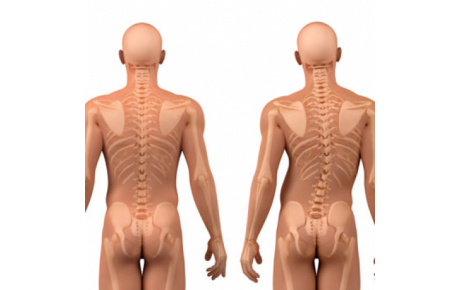Looking at the human population, you can risk saying that there are no healthy people - there are just those who have not been diagnosed. In my daily work I meet with a lot of young patients who have postural defects such as deformity of the knees, flat feet, deepening of natural curvatures of the spine. Let us deal with a case of a young player who was diagnosed with scoliosis. Usually, such words are heard in the doctor's office with recommendations for rehabilitation, often this is the limitation to practising sports, and it is recommended to visit the swimming pool regularly. A young patient along with the parents go to a physiotherapist with the desire to take the treatment. However, to determine the degree of deformity, an X-ray examination should be performed to determine the angle of the spinal curvature, i.e. Cobb angle. Having such a picture of the spine, you can monitor the progress of the treatment or lack of it, as well as the development of the deformation. It should be known that untreated scoliosis can lead to large deformations in not only the spine, but also internal organs such as the lungs, among others. It is known how important the lungs are for a player, which by deforming the torso can limit their life capacity. What often excludes a player from performing is the most common pain in the world, which can also be the result of spinal curvature and muscular disbalance. If we deal with a small degree of scoliosis or curvature up to 25 degrees of the Cobb angle, they are subject to observation and individually selected exercises. Greater or between 25 - 45 degrees, at risk of progression, require correction and individual therapy. Those above 45 degrees are already qualified for surgery. Despite many studies, the subject of which was idiopathic scoliosis, a unanimous opinion on the participation of deformed patients in sports activities was not made. You can meet opinions about prohibiting practising sports, about the lack of contraindications to doing it, and finally to those encouraging to practising sports. Undoubtedly, all aspects of the disease must be taken into account. First of all, the size of the curvature angle, determine the rate of its development, the age of the patient and the time when the deformation began. When considering whether and what sports activity can we do, it is necessary to determine to which group our patient belongs. We assume that a young athlete belongs to a group that does not require surgery, is under the care of a physiotherapist and regularly does exercises to correct the spine. On the basis of many studies, it was attempted to group both the possibility of practising sports depending on the degree of curvature, the degree of progression of curvature as well as the division of sports disciplines depending on the spine load. Thus, at values below 20 degrees, you can practice any type of sports activity, with 30-50 degree scoliosis or 20-30 degree scoliosis, but with five-step progression in the last six months you should not do sports at a professional level and club competition. With scoliosis above 50 degrees, only recreational sport is allowed. It must be remembered that everyone is different and a disqualifying criterion for practising sports of patients with LITTLE scoliosis is the occurrence of spinal pain. Remember to avoid this type of problems, try to do exercises that strengthen the muscle corset regularly and thoroughly.











